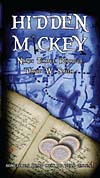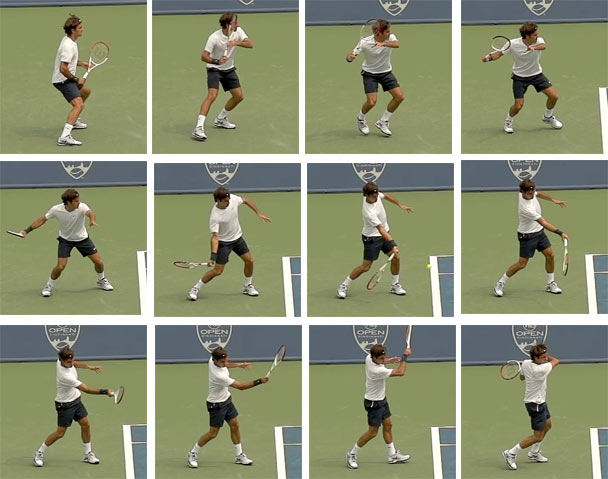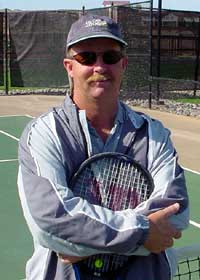|
TennisOne Lessons Progressions to a Potent Forehand Dave Smith, Senior Editor We hear marketing programs tout tennis learning methods as fast and easy if only students would follow a few simple, secret tips. And I’d love to tell you that was true; however, developing any advanced tennis stroke, such as a forehand, backhand, or serve requires a bit more dedication than that.
The truth is most club players over complicate their strokes to the point that they have to keep adjusting and re-adjust, tinkering and changing until they tie themselves up in knots so to speak. One only needs to visit the local tennis club or public courts to witness the vast diversity that such complexity produces. In comparison, watch any highly skilled group of players and you are sure to recognize two main thing: 1) a degree of efficiency within the patterns of each stroke attempted; and 2) the similarities in the foundations found in nearly every stroke. With the video access we have to today's top players, we can break down strokes and identify the key positional points that make up a quality swing. Think of it the same way we draw old-fashioned animation: Dozens of still pictures that when shown in succession, the individual still drawings move with fluid motion. If you look at the first picture, a few in the middle, and one at the end of the animation, we can identify the positions that make up the overall movement.
In this context we can examine the stroke of a skilled player breaking it down to its individual parts from the initial preparation to the pre contact position, contact, post contact and the finish and pinpoint the key components of the swing. In any sport where there is a swing (i.e., Golf, batting in baseball, and even sports like bowling, volleyball, or shooting a basketball, it is often useful to breakdown the motion into easily identifiable and manageable positions. The tennis stroke is further complicated by the opponent on the other side of the net who is trying to hit shots away from us making things more difficult. So, many shots are never identical relative to the location on the court or the location to our bodies. Add varying degrees of pace and spin and things get even more troublesome. Yet, even as we are faced with such diversity, we can localize each shot by moving our feet to the ideal location and hitting the shot with a stroke that creates consistency. Using a frame-by-frame capture of a stroke you can quickly identify key position points. Weapon Once a player develops a stroke foundation that mimics the key position points that skilled players execute, they can then begin to practice with an expectation of knowing what the ball will do on each successive shot. This ability to hit consistently with competence gives the player the confidence to build upon the shot to the point that he can now consider the shot a weapon. A weapon is a shot that a player looks to hit with a more offensive, aggressive stroke. It is a shot that they feel gives them an advantage in a rally, be it getting an opponent out of position, forcing a weak shot, or hitting an outright winner. However, if a player can only hit his ‘weapon’ with marginal consistency that weapon actually becomes a liability. In this article, we will break down the forehand so that players can start building a weapon that is as consistent as it is effective. A topspin forehand is potent weapon that will allow you to hit more aggressively and even shape the stroke so as to put any opponent in dire straits. Grips The grip and stroke are interdependent. That is, the grip will define the contact point for a forehand as well as define some footwork patterns that are inherently more advantageous for that particular grip. Understand that among highly skilled players, the grip also presents itself as one of the more diverse aspects. In other words, we see top juniors, pros, top club players, and college competitors using a variety of grips within their successful swing patterns.
The problem for some players who might see a severe forehand grip used by a pro is that when they try to execute a forehand with a more western grip, the dynamics of the racquet face are so changed that the player sometimes creates a disastrous swing to compensate for the severe racquet face. In my experience, as players evolve—and all players will evolve their stroke, naturally—they will adjust their grips as they gain a feel for, and a confidence for, their forehand stroke. Eastern ForehandI like the eastern forehand grip as an advanced foundation grip. While it is used by a number of highly skilled players, more importantly, it is a grip that allows for natural migration towards the more topspin-orientated grips. With the Eastern forehand grip, contact will be more off the front knee on a closed or neutral stance position. Also, because of this contact point, it tends lend itself to these footwork patterns rather than with an open stance. The swing tends to favor a more old-school low to high path with the racquet finishing over the opposite shoulder. Players can increase topspin by simply starting lower on the backswing portion, as well as finishing as high as desired. Players can finish with a reverse finish, however, the reverse finish is not as natural as when players use more severe grips.
Semi Western Turning the grip slightly, one bevel, the racquet face naturally closes more than the eastern forehand grip. When a player moves to this grip without previous experience, they notoriously hit balls into the net, even when trying to aim higher than usual. The closed stance does not work as well with this grip as the contact point moves more forward compared to the eastern grip. Thus, players will need to work on a neutral to a semi-open stance. This grip naturally encourages players to hit with a more open stance and can start the development of what some call the “Pro Style Forehand.” Loading the inside right foot, (for right-handed players) and exploding off it while transferring the weight to the left foot is a pattern that can add topspin and pace and when employed with the open stance. It also allows the player to recover to a neutral position during the finish of the stroke. Players will want to avoid over rotating and pulling away from the stroke too early. The finish of this shot can be varied, from a full reverse finish, to a conventional finish, to a lower left hip position, each finish will be dictated by the degree of topspin and forward velocity the player wants to execute. The “windshield wiper” movement associated with the modern forehand can easily be achieved with this grip.
Full Western The Full Western grip closes the racquet completely and is usually the most uncomfortable grip for anyone trying it for the first time. Most first timers will bury the ball in the bottom of the net no matter how high they aim! Yet, because of the extreme closed face, players can make contact even further in front of their bodies. This forward contact point allows the racquet to reach maximum acceleration at contact. It also can allow the racquet to be moving upward faster, creating greater topspin. The grip is ideal for higher bouncing balls. like those on clay courts (think Rafael Nadal) But it can make low, skidding sliced shots more difficult to convert. The full western grip also allows for the windshield wiper forehand finish and is very well suited for a full open stance, load-and-explode forehand. The finish of the stroke can be virtually any finish the player wants. Secret to all Grips: Foundation Principles In addition to recognizing that the contact point changes with each grip as well as body position, there are some common foundation points that allows a player to transform the forehand into be a weapon.
Notes on a Loop Swing There are many articles and varying opinions on the implementation of a loop within the backswing component of a forehand stroke. My experience is this: It is almost without fail that players naturally develop a loop swing within the progressions I am defining within this article. I’ve seen where some players were instructed to use a large loop swing (with the instructor saying, “This is what all the pros do”) with not very successful results. Two reasons: One, for many players the loop swing causes problems with getting the racquet below the ball, to the point they actually hit down on the ball because they simply couldn’t get the racquet low enough prior to contact. Two, some players simply are not comfortable with a loop swing. Either way, I’ve almost never had to mention “loop” to any of my students because I found out after years of teaching, that students develop a loop on their own and one that is more natural and personal for that individual. Thus, I recommend starting with a straight-back, low backswing in the development of the forehand. You will find that you will learn to feel your topspin faster and gain comfort more quickly with the new stroke elements. Define Your Swing Once you have created a stroke with the grip, stance, finish, and hold pattern clearly established, you can now add or deduct from the swing; meaning, you can add more topspin or pace by making the swing more vertical (for more topspin) or more horizontal (for more pace and less spin). You can’t effectively add or detract from a stroke that is not defined. If there is no foundation to a stroke, there is very little to build upon. This is one of the biggest reasons players lose control the minute they try to swing harder or hit a shot with added emphasis. Drills and Skills When a player understands and can emulate the stroke, grip and footwork elements of a quality forehand, the logical progression is to take this knowledge out to the court and develop the consistency and, eventually, the unconscious application of this desired stroke. As with any new stroke configuration (whether you are a beginner or a more seasoned player trying to develop a better stroke) there is a logical and practical progression to this goal. Build within control I recommend starting with drop-feed forehands so you don't have to negotiate an incoming ball fed by a partner or a ball machine. Drop-feed balls allow a player to control the tempo better, focus on the swing elements and to hold the finish as described. The player can advance the drop-feed drills to hitting to different targets from different locations on the court. (IE: Inside in, inside out, crosscourt, sharp angles, down the line, etc.) Once the player feels they are gaining real comfort and familiarity with the stroke and seeing the ball respond correctly, the feeds can move to dead ball tossed feeds. Again, emphasis is now incorporating the same controlled stroke used in the drop-fed drills with a ball moving towards the player. As before, hitting from a variety of court positions will help improve aim while seeing how spin will help the shot become more effective.
Increasing speed of feed ball to actual rally situations is the final drill application. Either hitting off a ball machine or with a hitting partner, you will want to see if the shot breaks down in such situations. If so, I recommend revisiting the drop-feed and control feed drills. Keep in mind that your stroke will probably evolve some within this progression. That means, your grip may become more severe, you may develop a larger loop (as mentioned earlier), and you will start to explore more open stance footwork positions. If you find you are not exploring these other key elements, you may then work intentionally on such aspects to see if you find more effectiveness in their application. Not a One-Size-Fits-All Because a skilled forehand can consist of different grips, different swing patterns, and different stances, it is obvious that a high-level forehand has variations that clearly make it a stroke of diversity. However, even within this variety, the foundation principles mentioned above are critical to establishing a quality and, eventually, a potent forehand. In addition, I will add that within these foundation principles, players will have the opportunity to evolve their forehand as they gain more familiarity and confidence within the stroke, thus making such forehands a continued, progressive stroke that players can enjoy seeing more optimal versatility and confidence.
Your comments are welcome. Let us know what you think about Dave Smith's article by emailing us here at TennisOne .
HIDDEN MICKEY 
If you are a fan of anything DISNEY, Dave Smith (better known as Senior Editor for TennisOne and author of two prolific tennis books TENNIS MASTERY & COACHING MASTERY), has just published an exciting and compelling novel, HIDDEN MICKEY. This Action-Adventure story centers around three friends who discover a secret journal penned by the master storyteller himself, Walt Disney. The diary hints at hidden treasure and sends the three friends on a wild cross-country search, following intriguing clue after clue and finding incredible discoveries about the great man, his life...and about themselves. For anyone who loves Disneyland or all things Disney, Hidden Mickey is a MUST READ. Limited First Edition, signed and numbered copies, available.
He is the author of two top-selling tennis books, TENNIS MASTERY & COACHING MASTERY. (http://www.tennis-warehouse.com/Tennis_Mastery_-_Beyond_35_Level_Revised/descpageSGTA-MASTERY2.html) Dave is a Dunlop Sports Master Professional and a USPTA P-1 and has been a featured speaker at numerous divisional and world conventions. In addition, Dave created and authored the popular Disney Mysteries, "Hidden Mickey", adventures about Walt Disney and Disneyland. For over twenty-five years, Dave has published over 400 articles on tennis in magazines, web sites, and for international tennis publications. Today, he owns Synergy Books Publishing and helps authors realize their publishing dreams. For his information, go to www.synergy-books.com. You may also reach Dave at david@synergy-books.com. |
||||||||||||

 David W. Smith has been a coach, tennis teaching professional, Director, Head Professional and General Manager of clubs and tennis facilities in California, Arizona and Utah. As a coach, Dave had one of the finest high school team tennis records in the U.S. winning over 800 team matches against fewer than 20 losses in 28 seasons of coaching boys and girls tennis teams.
David W. Smith has been a coach, tennis teaching professional, Director, Head Professional and General Manager of clubs and tennis facilities in California, Arizona and Utah. As a coach, Dave had one of the finest high school team tennis records in the U.S. winning over 800 team matches against fewer than 20 losses in 28 seasons of coaching boys and girls tennis teams.